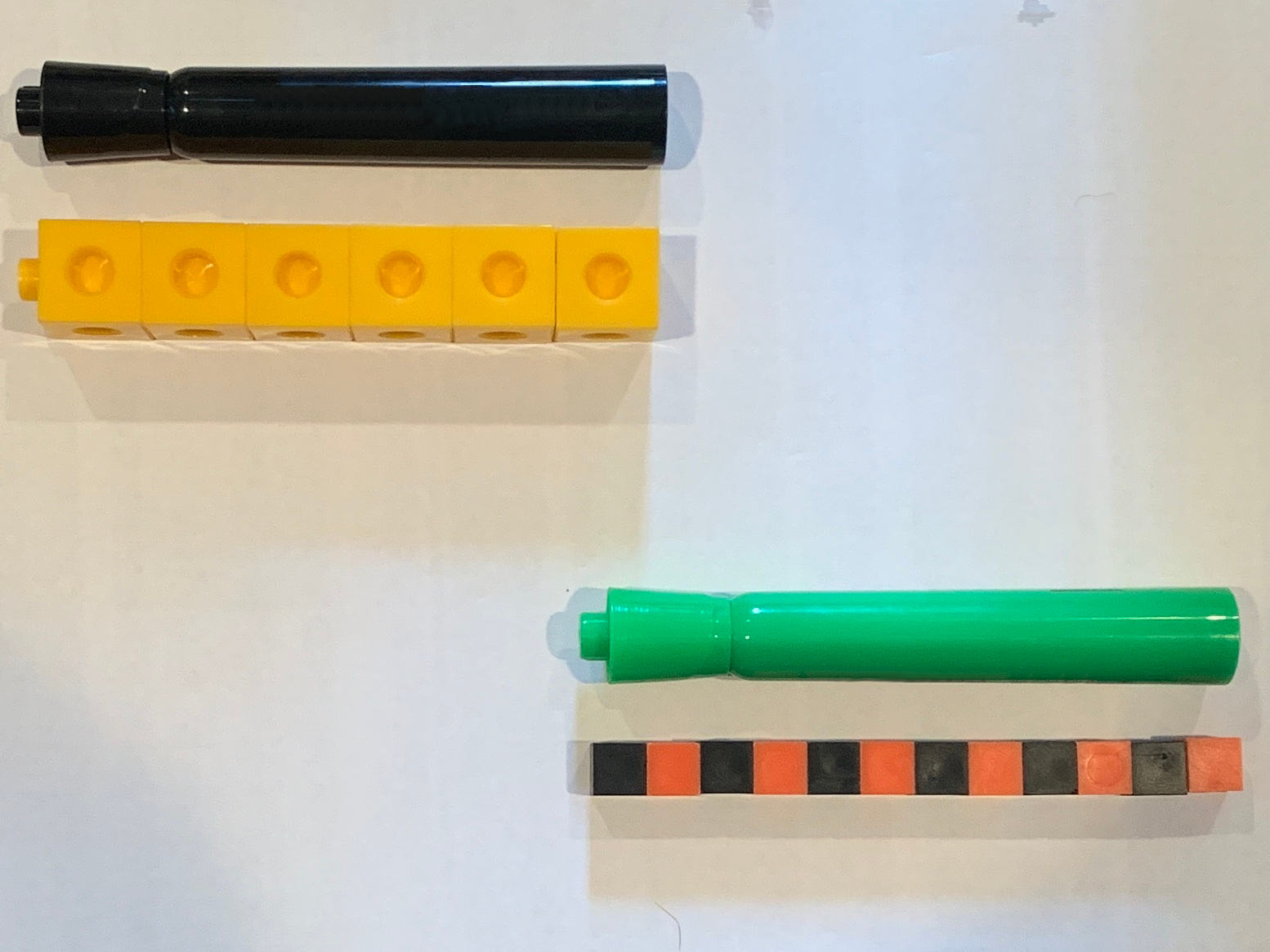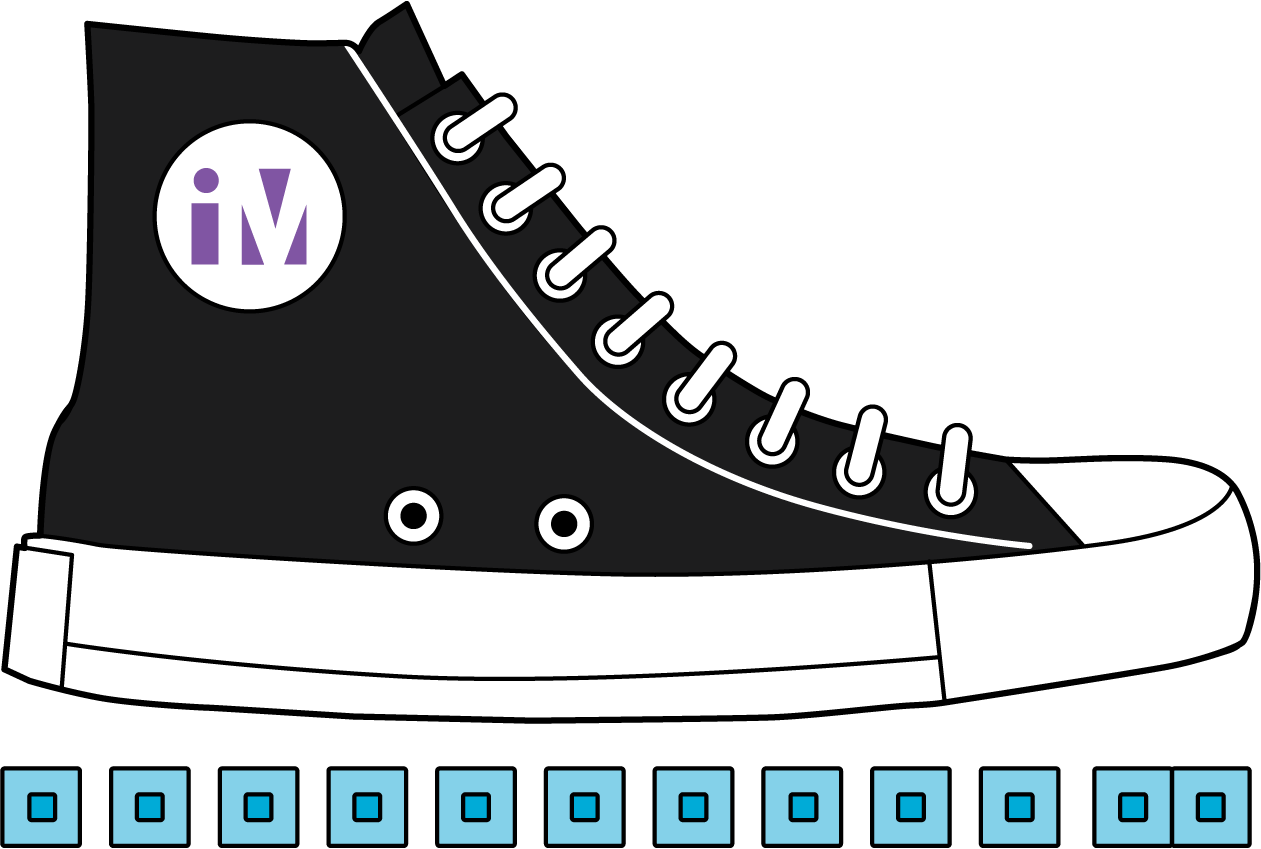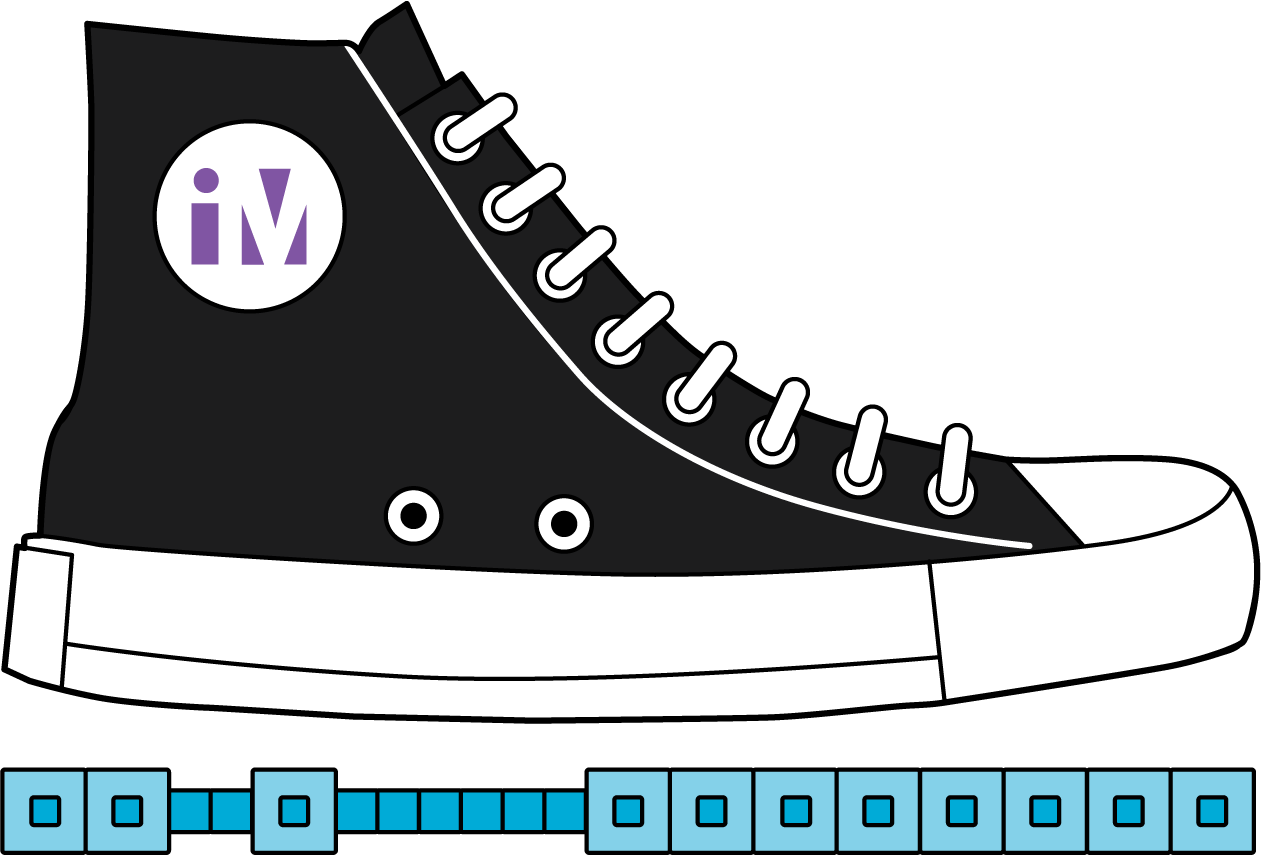Lesson 7
Measure Length with Different Length Units
Warm-up: Notice and Wonder: Large Cubes and Small Cubes (10 minutes)
Narrative
Launch
- Groups of 2
- Display the image.
- “What do you notice? What do you wonder?”
- 1 minute: quiet think time
Activity
- “Discuss your thinking with your partner.”
- 1 minute: partner discussion
- Share and record responses.
Student Facing
What do you wonder?

Student Response
For access, consult one of our IM Certified Partners.
Activity Synthesis
- “Can anyone restate _____’s idea?”
Activity 1: Measure With Different Objects (20 minutes)
Narrative
The purpose of this activity is for students to measure the same length using three different length units. Students choose which units they would like to use. When groups compare their measurements, they notice that although they measured the same length, they got different measurements. They consider why this could be and determine that when they use a different size length unit, they get a different number to describe the length. Some students may notice that the number of units needed depends on the size of each individual length unit, but this is not a discussion point until grade 2.
Supports accessibility for: Social-Emotional Functioning, Organization
Required Materials
Required Preparation
- Create sets of 30 connecting cubes, 50 base-ten cubes (centimeter cubes), twenty 2-inch paper clips, and twenty 1-inch paper clips for each group.
- Put 18-inch strips of tape on the floor for each group.
Launch
- Groups of 2–4
- Give each group access to the different length units.
- “Who wears the biggest shoes in your family?”
- Share responses.
- “How long do you think your shoes will be when you are grown up?”
- Share responses.
- “A man named Jeison Orlando Rodriguez Hernandez holds the record for having the longest feet in the world. He has to have his shoes specially made because stores don't sell shoes big enough.”
Activity
- “There are strips of tape on the floor that show the length of Jeison’s foot. You will measure the length of his foot using different objects.”
- Read the task statement.
- 12 minutes: partner work time
- “Compare your measurements with another group. What do you notice?”
- 2 minutes: small group discussion
Student Facing
Circle the 3 objects you will use:
connecting cubes
small cubes
small paper clips
large paper clips
Measure the length of Jeison's foot with each object you chose and fill in the table.
| object | length |
|---|---|
Student Response
For access, consult one of our IM Certified Partners.
Activity Synthesis
- “What did you notice when you measured the length of Jeison's foot using different objects?”
- If needed, ask, “Why did we get different numbers when we used different objects?” (The objects we used had different lengths. Some were shorter and some were longer. We used more small cubes to measure the length than any other object.)
Activity 2: Measure the Teacher’s Shoe (15 minutes)
Narrative
Advances: Speaking, Conversing
Launch
- Groups of 2
Activity
- Read the task statement.
- 8–10 minutes: partner work time
- Monitor for students who can explain whose measurements are accurate and whose are not accurate and why.
Student Facing
-
Andre measured his teacher’s shoe and said it was 15 connecting cubes long.

Is his measurement accurate?
Why or why not?
-
Jada measured her teacher’s shoe and said it was 12 connecting cubes long.

Is her measurement accurate?
Why or why not?
-
Clare measured her teacher’s shoe and said it was 30 small cubes long.

Is her measurement accurate?
Why or why not?
-
Kiran measured his teacher’s shoe and said it was 19 cubes long.

Is his measurement accurate?
Why or why not?
Student Response
For access, consult one of our IM Certified Partners.
Advancing Student Thinking
- “How is the way Clare measured like how we measured objects in the last activity?”
- “Did Clare measure the entire length of the shoe with the small blocks?”
- “How are the small blocks the same? How are they different?”
Activity Synthesis
- Display the image for Jada’s measurement.
- “Is Jada’s measurement accurate? Why or why not?” (It is not accurate because there are gaps between some of the cubes.)
- Display the image for Kiran’s measurement.
- “Is Kiran’s measurement accurate? Why or why not?” (Kiran’s measurement is not accurate because the cubes are different sizes.)
- “What could Kiran change to make his measurement accurate?” (He could use all connecting cubes or all the little cubes, instead of using some of each.)
- “When we measure a length with objects it is important that each object has the same length.”
Lesson Synthesis
Lesson Synthesis
Display the images that show Andre’s measurement of his teacher’s shoe from the previous activity.
“Today we looked at how other students measured their teacher’s shoe. We decided that Kiran’s measurement of 19 cubes was not accurate because he used some connecting cubes and some small cubes.”
“Kiran says that Andre’s measurement must not be accurate either because he used two different cubes.”
“What do you think Kiran means? Do you agree with his argument about Andre’s measurement?” (I think he means there are 2 different colors. I disagree. The different colors do not matter. Each connecting cube has the same length. Each cube is the same size and Andre did not have any gaps or overlaps.)
As time permits, display Clare’s measurement and ask, “What about Clare’s measurement? She used many different colors of small cubes. Is her measurement of 30 small cubes accurate?” (Yes, it’s accurate. The color isn’t what matters. What matters is that each cube has the same length and that there are no gaps or overlaps.)
Cool-down: The Length of a Shoe (5 minutes)
Cool-Down
For access, consult one of our IM Certified Partners.